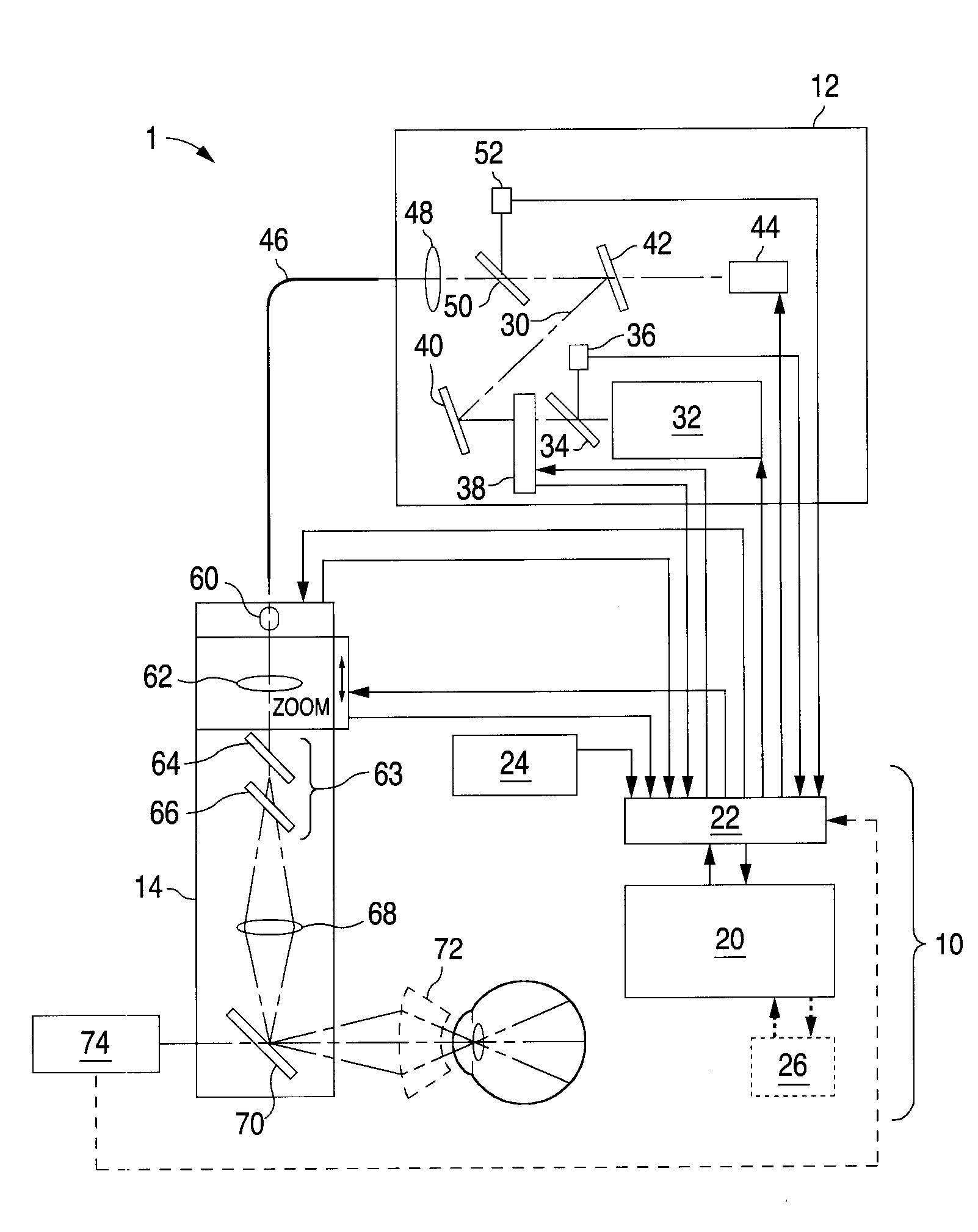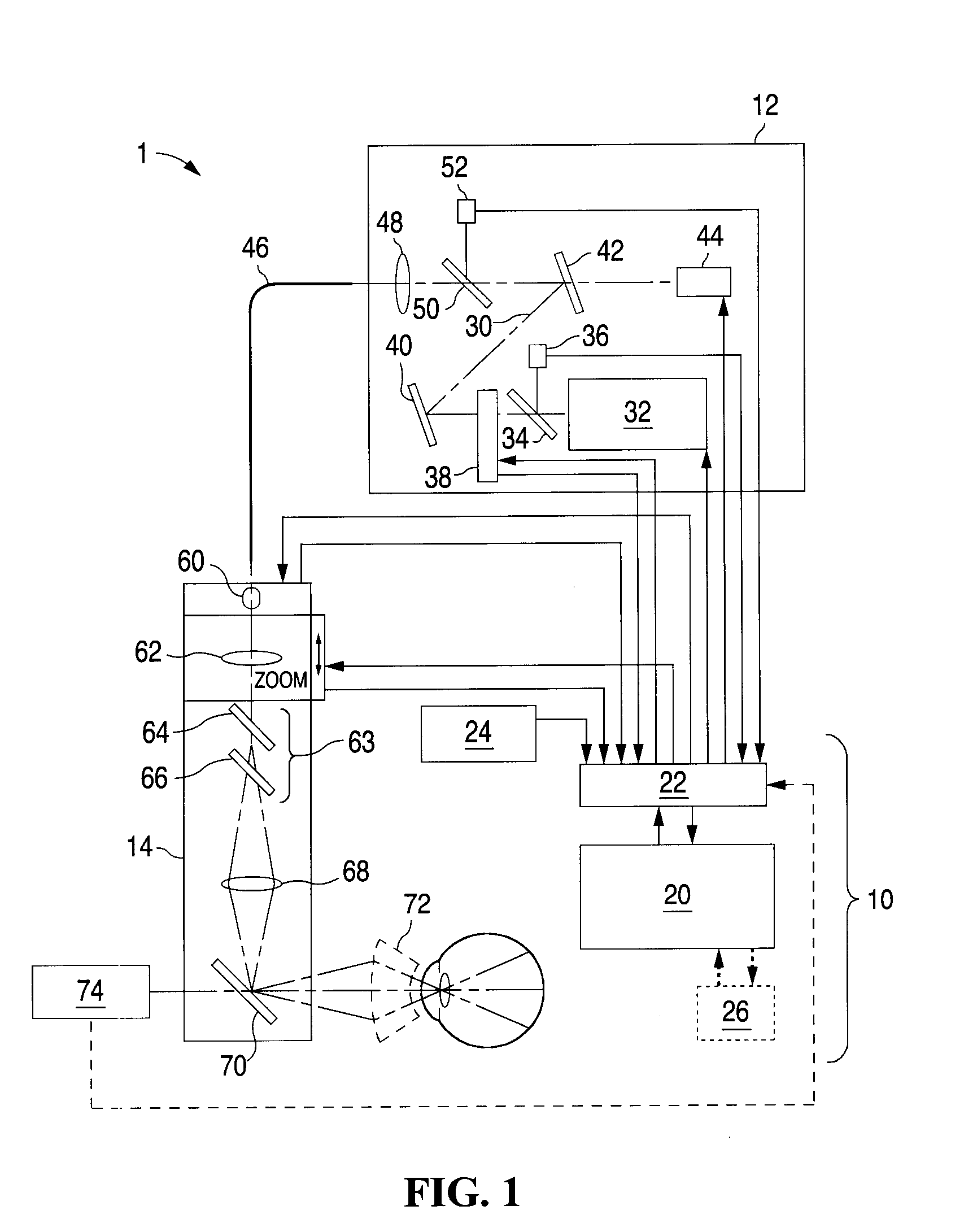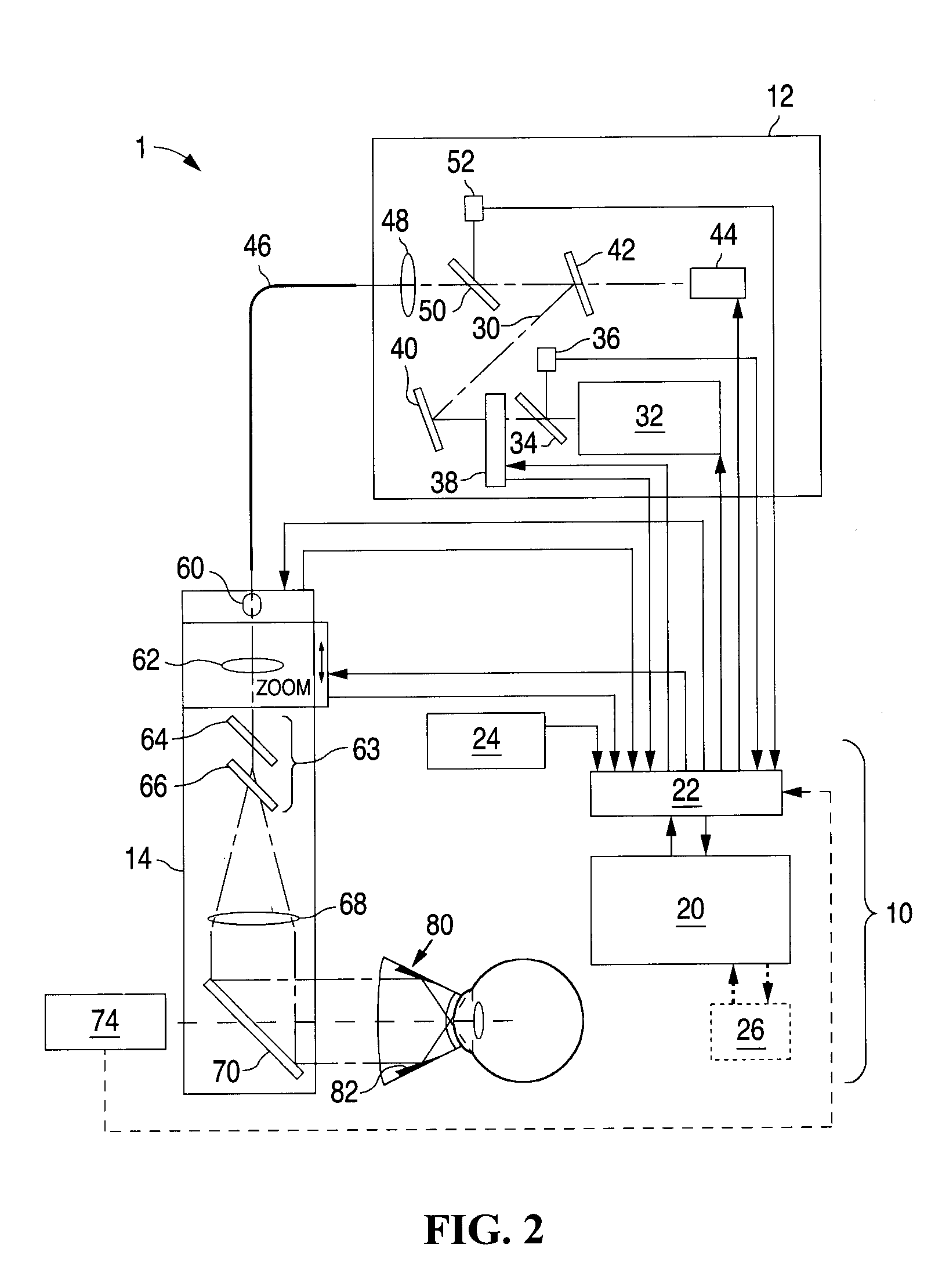System And Method For Determining Dosimetry In Ophthalmic Photomedicine
a technology of ophthalmic laser and dosimetry, which is applied in the field of system and method of determining dosimetry in ophthalmic laser, can solve the problems of reducing the patient's vision, irreversibly damaging the overlying sensory retina, and limiting the use of ophthalmic laser, so as to achieve more predictable treatment results and efficient determination of photothermal target properties
- Summary
- Abstract
- Description
- Claims
- Application Information
AI Technical Summary
Benefits of technology
Problems solved by technology
Method used
Image
Examples
Embodiment Construction
[0023]The present invention is a system and method for the efficient determination of treatment parameters needed to form desired ophthalmic photothermal lesions, which allows for the proper setting and adjustment of the treatment parameters. The system operates based on the visible response of the target tissue to a dosimetry pattern of light which creates lesions on the target tissue. Tissue appearance following its exposure to the dosimetry pattern helps the system and / or user to select appropriate system settings for subsequent treatment. A specific lesion exhibiting the character to produce the desired clinical effect may be identified and corresponding system settings used, or the settings may be extrapolated from the observation of the results of the dosimetry pattern.
[0024]FIG. 1 illustrates a system 1 for implementing ophthalmic photothermal treatment, which includes a control unit 10, a light generation unit 12 and a light delivery unit 14. This system can provide either p...
PUM
 Login to View More
Login to View More Abstract
Description
Claims
Application Information
 Login to View More
Login to View More - R&D
- Intellectual Property
- Life Sciences
- Materials
- Tech Scout
- Unparalleled Data Quality
- Higher Quality Content
- 60% Fewer Hallucinations
Browse by: Latest US Patents, China's latest patents, Technical Efficacy Thesaurus, Application Domain, Technology Topic, Popular Technical Reports.
© 2025 PatSnap. All rights reserved.Legal|Privacy policy|Modern Slavery Act Transparency Statement|Sitemap|About US| Contact US: help@patsnap.com



